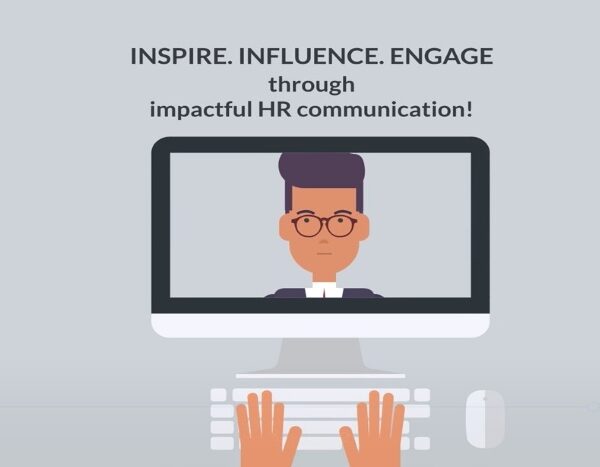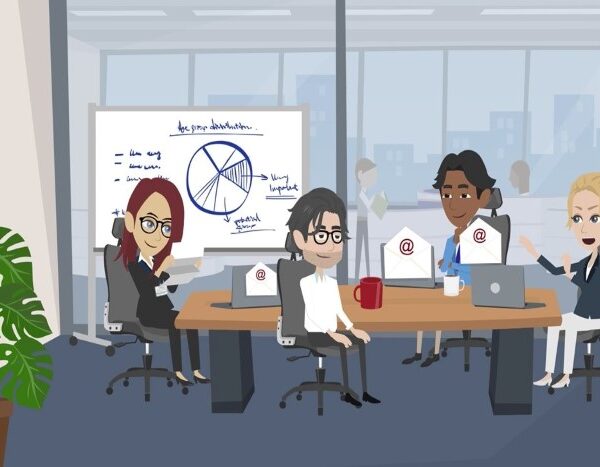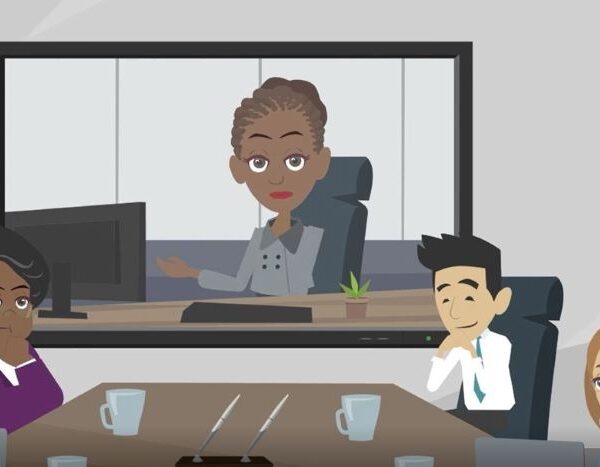Building great employee communication isn’t easy, especially when the requirements and expectations of stakeholders undergo rapid shifts and have become more complex and unstable. Since the start of the pandemic, new trends have emerged in communications and engagement, taking its birth from the extra-ordinary circumstances of work life.
Let us examine a few top internal communication trends of 2022 and see how best we can align the communication strategy to the emerging requirements, whilst addressing the challenges and capitalising on the opportunities that they present.
It is not more channels and tools that we need at the moment as our colleagues are already experiencing a message fatigue, overwhelmed with communication from multiple sources. On the contrary, what we need is to intuitively and empathetically understand the communication needs and preferences of each employee segment and deliver on their requirements with consistent focus.
1. The focus on the frontline worker
2021 was the year of the front liner. One of the most significant internal communications trends to surface last year was the strong visibility and awareness of the frontline worker. Previously overlooked, these key workers have become a top priority in today’s internal communication plan. As per a recent Harvard Business Review survey, 72% of respondents claimed to see increased productivity by prioritising their frontline workers through updated information and engagement plans.
Prior to the pandemic, employees working away from desks- on project sites or in purely customer-interfacing roles like customer service representatives, shop floor staff, branch staff, store clerks, delivery drivers and security personnel – were often overlooked in the communications plan, with a certain percentage even lacking access to a permanent work station. Though there were attempts to reach out to them through manager huddles and weekly round-up newsletters on notice boards, these proved ineffective mainly due to the lag in adopting mobile collaboration tools in our internal communications.
It’s now accepted without a shade of doubt that it is not enough to post an announcement on the intranet and hope they somehow get to hear about it. Frontline workers need access to communication tools and technology that connects with them instantly. We need to weave into our communication plan a clear strategy to reach out and engage with this important segment of our workforce who makes things happen on the floor and who forms a direct link to our customers, through focused messaging delivered through instant communication channels like employee apps with added opportunities for feedback in real time to improve the quality of our products, services and processes. If they don’t have access to mobile apps, it would be worthwhile to invest in digital signage screens or similar channels.
2. The growing need for real time updates
The world has shifted around us drastically during the past months. As scenarios unfurl ruthlessly and unexpectedly, the need for instant communication updates has also come to the fore. Moreover, in this age dominated by social media, we have come to expect the relevant information to find us in record time.
To address the immediacy of the communication requirement, we need to develop appropriate channels and approval policies that can together deliver concise, precise information in real time. For instance, directives, policies and rules being inextricably linked to evolving and volatile situations around us, are subject to sudden shifts and needs to be communicated instantly and reinforced without room for doubt. Once the channels and policies are set up and rolled out, it is also important to ensure that these communication pathways are used consistently to assimilate into employee work life seamlessly and firmly so that they become the trusted source of vital, updated information.
3. Need for new messaging formats that resonate with the millennials
Gone are the days when an intranet announcement accompanied by a static image was considered as an instance of communication done right. Today’s workforce prefers visual content and are able to comprehend and engage with complex ideas better when they are represented through visual media.
This year, attempt to capture the attention of your employees and engage them through new and unconventional ways of communicating key messages. This can be through short videos, quick Q&As, or eye-catching GIFs which can convey complex ideas to more basic content themes instantly and with clarity.
Eg: The below is an instance of creative use of e-mail to approach new joiners to publish an introduction about themselves on the intranet.

Short videos can explain a topic creatively and comprehensively and is now much more appealing to many than blocks of never-ending text.
Please check out how the below short video that conveys the ‘why’ behind employee engagement surveys and also helps to dispel any ambiguity regarding the anonymity of the process.
In this way, you can limit the use of longer e-mails to announce security updates, regulatory content or for crisis communication to ensure that these important messages are not lost in a flurry of unwanted, repeated communication.
It is also worthwhile to explore opportunities for incorporating digital formats like video snippets or personalised collaterals in the new employee onboarding journey.

Next, find ways to harness employee creativity and put them to work in internal communication deliverables by rolling out innovative creative challenges and competitions. Everyone loves to win and what better than competitions to infuse some fun to an otherwise formal workplace.
Or organise a challenge whereby employees can send in their images based on a certain theme (Eg: The theme can be the Values), which you can convert to quick digital posters. Provide clear guidance as to your creative expectations and probably set aside an hour on a Friday afternoon to help them organise the mini photo sessions within or across departments. And voila, you now have personalised creatives to work with for the next couple of months! You can use these images alongside your specific content across the intranet, emails, posters and so on.
Whatever channels you use throughout the week, it would be great to develop curated summaries in the form of weekly newsletters, either across the organisation or for specific departments, which will have links to detailed information on the intranet to bring your employees up to speed with business and other updates of the week gone by. It would be great to send them out regularly either on Fridays or at the end of the working week so colleagues can catch up on the news.
4. Engaging a hybrid workforce
With organisations adapting a hybrid work environment and work experiences becoming more fluid and individualised, communication strategies need to address the informational wants of remote workers and those on site.
The pandemic demonstrated the importance of purpose and sense of belonging. But the hybrid work life, virtual meetings and shared work spaces have shown signs of weakening engagement and failing to establish a line of sight.
With the crisis hopefully behind us, 2022 will be a return to normalcy, a year which will see a shift in employee attitudes and wants, with many poised over the ‘great resignation’. Given this, it is imperative for communicators to track the attitudes of their various audiences, anticipate issues, and mediate between different views and priorities.
If we want to help shape a work environment where our people can thrive and be the best version of themselves, we need to ramp up our engagement strategy to help the various sections of our workforce feel like they belong, that their contributions are valuable. This will mean building new audience profiles, understanding what matters most to different employee segments, re-defining communication objectives and developing diverse ways to connect and engage with the workforce.
5. The need for ‘intentional’ and ‘personal’ communication
Millennials are transforming the workplace in many ways, more importantly in the type of content, the frequency and how they wish to receive this communication.
Segment your employees and mould your communication based on relevance to the specific target groups. Use formats appropriate to each group (For example, Call Centre employees will not be updated through e-mails alone; they might need a manager huddle before they start duty). In short, every employee should feel that the message was crafted with their needs in mind and this is intentional communication.
Apart from the mandatory message house, it would be great to look at moments that matter in the employee journey and ensure the communication during those phases stick. Employee on-boarding, learning and development milestones, rewards and recognition are all meaningful events in the employee life-cycle that can be made special and impactful through refreshing content approaches by the communications team. This will also help in establishing bonds with colleagues who will become your communication ambassadors in the future.
6. Spotlight on wellness
Wellness, especially mental health is another area which has come into sharp focus during the upheavals we experienced over the last two years. For employees to be focused, motivated and driven, they need to thrive in both their professional and personal lives- referred to as ‘thriving wellbeing’ in Gallup’s State of the Global Workforce report. As per the report, in 2022, workplace programs that support the myriad aspects of employee wellbeing – physical, mental, social and financial- will ensure higher engagement rates and stronger culture.
By contributing to shaping psychologically safe environments, IC can enable a workplace culture where everyone feels valued, seen and heard. Ensure to work more closely with the employee wellness department to help roll out internal campaigns that give more visibility to wellness initiatives. When environments are psychologically safe, employees are more likely to be honest and forthcoming about their concerns which in turn helps to craft a resilient culture from the inside out.
7. The rise of the internal influencers
2022 is also the year to acknowledge and leverage the power of your internal influencers.
Identify the internal influencers, who are internally motivated, represents a group/department, has a strong network and great internal cult. Build relationships with them, give them more visibility on diverse communication platforms and invite them to participate in the internal communication process through spearheading discussion forums, blogs or internal networking events.
A well-structured communication strategy, with cross-functional stakeholders who are engaged and accountable to translate it into an actionable plan and subsequent seamless implementation is essential to improve collaboration at the workplace, employee productivity, and employee engagement. It is equally important to have the right resources and skill sets in place as successful internal communication has moved away from the traditional text-only version and is synonymous with innovative, visual formats. This means investing in technology, skills and specialists like never before. However, it is an investment that will help to eliminate generic, irrelevant and unappealing communication and infuse a new element of trust and relevance in your internal communication.
Need help for your internal communications?
For internal communication support, please reach out to:
Email: info@commsimpact.ae / WhatsApp: 052 530 8771





